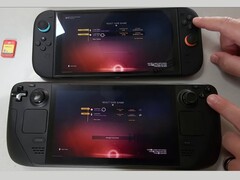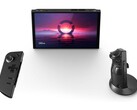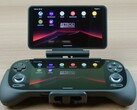Steam Deck OLED leads at 24 W, but Switch 2 delivers 2.5x more FPS at 8.6 W TDP in the latest detailed comparison

Ever since the launch of the Switch 2, Nintendo and its latest handheld gaming console have been at the centre of widespread discussion. From Switch 2 owners getting their devices bricked, to the Switch 2 overheating in some scenarios, to the Nintendo handheld being compared to the Xbox Series console in terms of performance. While some praise its capabilities, others remain wary of Nintendo’s reportedly strict control over the platform and device ownership.
And now, YouTube channel The Phawx has put the Steam Deck OLED and Nintendo Switch 2 head-to-head, and uncovered some surprising results. The YouTuber benchmarked both devices in handheld mode, focusing on Cyberpunk 2077 and No Man’s Sky. The goal was to evaluate raw performance and power efficiency. Frame rates were manually counted using high-frame-rate video capture for accuracy, while power consumption was measured based on battery depletion under controlled conditions.
At full power, the Steam Deck OLED leads. As per The Phawx, running Cyberpunk 2077 at 24 W total system power delivered an average frame rate of 41.6 FPS, compared to 33.5 FPS on the Switch 2, an advantage of approximately 24%. Load times also favored the Steam Deck thanks to its higher CPU clocks, with Cyberpunk loading nearly 78% faster.
However, the comparison shifts when both handhelds are limited to the same 8.6 W power budget, the average system power draw of the Switch 2 under load, according to The Phawx. In this scenario, the Switch 2 delivers 2.5x higher average FPS, 226% better 1% lows, and up to 3x the performance in titles like Cyberpunk 2077 and No Man’s Sky, outperforming the Steam Deck OLED within the same thermal and power envelope.
In No Man's Sky, the Steam Deck OLED struggled at native 1080p with FXAA because Intel’s XeSS upscaling was non-functional, as detailed by The Phawx in their video. The Switch 2, by contrast, used DLSS to upscale from a lower internal resolution, delivering smoother frame rates within the same power constraint.
Standby power consumption showed a similar pattern. Over a 12-hour idle test, the Switch 2 consumed just 1.18 W compared to the Steam Deck’s 4 W, offering three times better standby efficiency. While the ARM-based Switch 2 still falls short of high-end mobile chips like the Snapdragon X Elite in this regard, it still holds an edge over x86-based handhelds, according to The Phawx.
These results suggest that while the Steam Deck OLED remains the better performer under unrestricted power, it’s Nintendo’s Switch 2 that is currently unmatched in delivering playable performance within tight thermal and power constraints. For a deeper technical breakdown, it’s worth watching the full video by The Phawx, linked below, they do an excellent job detailing each test and methodology.




































